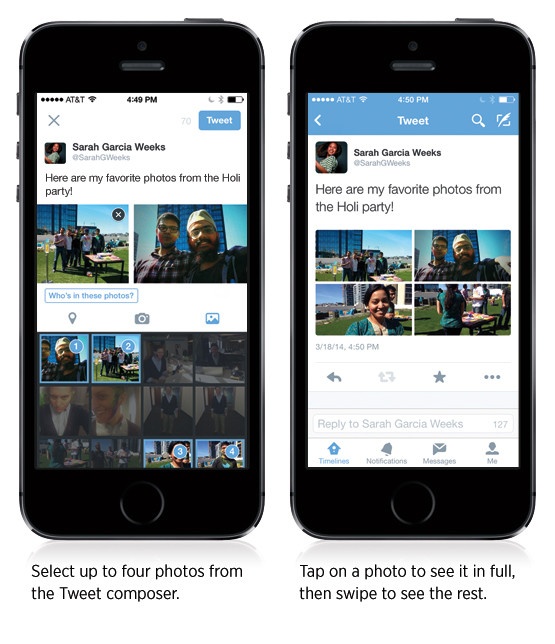
Posted By Kathy Wilson on April 22, 2014
In his 2000 bestseller "The Tipping Point," Malcolm Gladwell analyzed how some trends are able to take hold of the collective consciousness, while others fade into oblivion.
In the 14 years since that book's debut, marketing has come a long way in adopting those best practices Gladwell espoused. But three key strategies still stand out to me as the ones brands too often neglect. In fact, I'd suggest if you're not doing the following things effectively and on a sustained basis, your brand will never engage with the influencers with the power to tip market share in your favor.
#1: Challenge Conventional Wisdom
Henry Ford famously said, “If I had just asked people what they wanted, they would have said faster horses.”
Great brands give customers something they never knew they wanted (and that they later view as a necessity). Great brands don't just react to trends, they anticipate them. Great brands understand how new generations of buyers think and act – and apply that wisdom to their product or service strategy.
Here's an example. One of Tier One's clients is the millennial marketing agency, Fluent. Fluent works with major brands like Macy's, L'Oreal and Unilever to help these companies understand and develop strategies that build awareness, brand loyalty and drive sales with the hard-to-crack millennial market. (I bet every parent of a late teen or early 20-something sometimes wishes they had someone at Fluent on speed dial.)
Fluent observed a phenomenon that's causing Detroit, Munich and Tokyo some real angst: namely, that car buying numbers among millennials are way down and carmakers didn't seem to understand why.
Fluent is all about helping its clients abandon conventional wisdom when it comes to truly understanding and engaging this new generation of influential buyer. The company penned a story in Fast Company that identified some of the reasons a car no longer held the same appeal to a 20-year-old as it once did to his or her parents at that same age. Namely, that technology has created the ability -- the freedom -- to enable millennials to connect with friends and the world in a way we once only could by jumping behind the wheel and taking off.
By challenging the accepted notion that every young person longs to own a car, Fluent's story sparked widespread conversation and some really lively debate (to date, the story's been shared thousands of times on social channels). It's this kind of outside-the-box perspective that helped Fluent grab the #4 spot on the Boston Business Journal's recent ranking of the fastest-growing companies in Massachusetts.
#2: Give Your Buyers a Reason to Care
How is it that some brands like Apple manage to build a maniacal and fiercely loyal following, while others with the same access to talent and technological resources aren't as innovative? Turns out it's one part messaging…and one part biology.
In his much-viewed TEDx talk, author, leadership expert and Columbia University professor Simon Sinek presents his concept of “The Golden Circle.” The Golden Circle espouses that great companies tell their stories in a way that resonates with the biology of human decision-making, and explains why consumers are inspired by some leaders, messages and organizations versus others.
Picture a dartboard with “WHY” in the bulls eye, “HOW” in the next outer ring and “WHAT” in the largest outer ring. The “what” represents what a company does, the “how” is its competitive differentiator, and the “why” is the purpose, cause or belief behind what they do.
Sinek contends that most organizations (and leaders, for that matter) tell their stories from the outside in, omitting the crucial “why” that forges an emotional, biological connection with buyers. But the inspired brands, like Apple, think, act and communicate from the inside out.
Why does this matter? Not only does this make for more compelling messaging, it resonates with us in ways we don't even consciously comprehend. Turns out, the Golden Circle corresponds with the human brain. The Golden Circle's “what” level corresponds with the part of our brain that's responsible for rational thought and language. The “how” and “why” levels correspond to the part of our brain that drives feelings like trust, loyalty, and, importantly, decision-making.
So if a brand is going to achieve mass-market appeal – making buyers of the customers who fall into the early majority and beyond category – it's key to inspire the innovators and early adopters to tip market share in your favor.
#3: Getting to Engagement: Numbers Matter but Earned Trust Trumps All
Lastly, numbers are playing an increasing role in getting to the market share tipping point. For decades, marketers have struggled to put some science behind the art of what they do. With the rise of Hubspot, Google Analytics, and other metrics platforms, we've finally got the tools to do it.
What these platforms are showing us, with increasing insight, is it's not enough to drive traffic to a site, have your content retweeted, or get clicks on a white paper download. The trick is engaging with the right audience. Seems obvious enough.
But the problem is, turns out there's no clear agreement on how to define “engagement.” A recent story on mediabistro.com shared the results of a survey conducted by the enterprise engagement and customer experience management company Thunderhead. Thunderhead surveyed 45 CMOs from different countries and industries to understand these CMOs' perspectives on engagement, what it meant, and how they had to react to it to ensure their organizations were prepared.
The result, according to Thunderhead?
- 75% of CMOs say they don't know how to engage with customers
- One-third don't know if customers value the relationships
- Two-thirds have no customer relationship strategy
- 80% say they're “deluged” with data about their customers but aren't sure what to do about it
Thunderhead survey leader Esteban Kolsky shares the following takeaways in the mediabistro story:
- Engagement is really a way of defining a customer's knowledge and trust of your brand over a given period of time
- In other words, it's about delivering value, be it through content/information, products or deals, or the personal satisfaction of having rewarding interactions with a business–again, over time
- A single interaction will not qualify as engagement because it does not amount to a relationship
- The concept of engagement is almost impossible to quantify because it does not present an obvious data set
To quote from mediabistro's story, “Kolsky writes that trust earned with time is the key metric in this equation–which is why it's so relevant to PR. Trust and reputation are essentially one and the same. An ‘engaged' brand is one that promises and, more importantly, delivers value to customers consistently and will continue to do so.”
I have to believe that Mr. Sinek and Mr. Kolsky would agree that the key to engagement is about staying close to that part of the customer's brain that generates feelings of trust and loyalty. So while there's value in keeping an eye on those analytics, numbers may not be telling you the full story.
So how does one effectively reach the tipping point? Offer us something new, turn us into believers, and demonstrate you are worthy of our belief. Oh, and don't forget to do it all over again once every 18 months.

Kathy Wilson
Kathy Wilson is a Co-founder and Managing Partner at Tier One, where she leads the agency's Boston office and serves as a strategic client counselor. She taps her three decades of experience in B2B and B2C technology, digital healthcare, and financial services — including work counseling major brands like SAP, Citrix, Ultimate Software, GHX, and Ally Financial — to help clients meet critical business and marketing objectives. Kathy is a die-hard Red Sox fan and loves nothing better than a summer day at Fenway Park.

